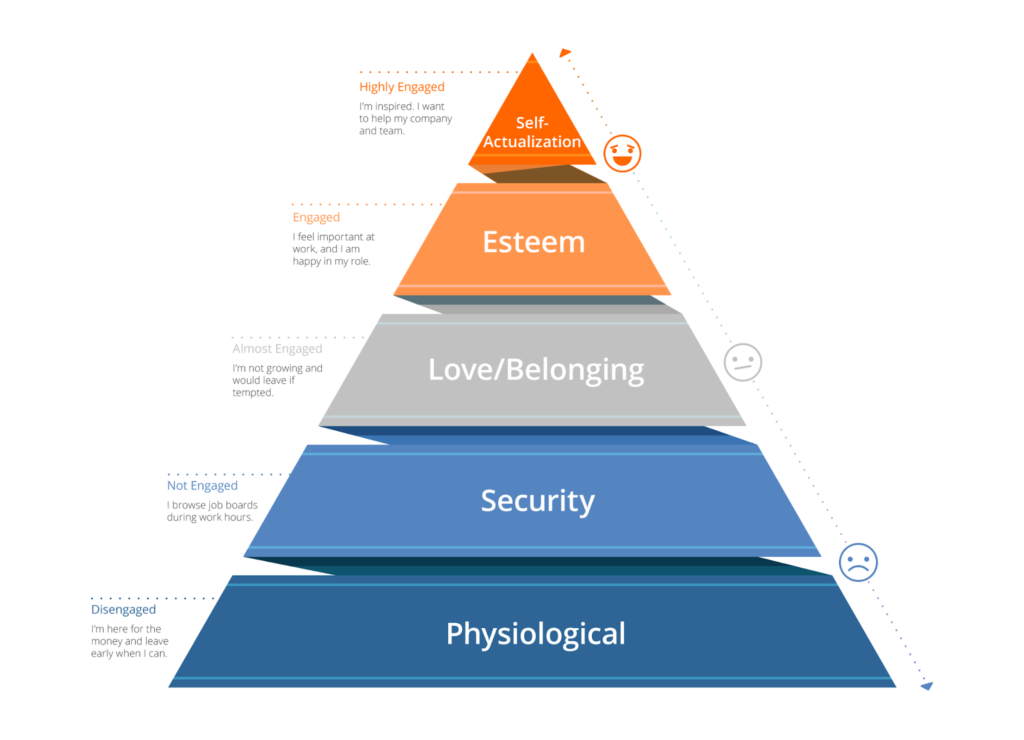The time has come for the final part of our series on hiring remote developers – onboarding new developers. Although this is the last step of the remote developer hiring process, it’s arguably one of the most crucial to ensure your hire is successful.
This is of vital importance because successful hires equal a successful company. In turn, failed hires often equal a failed business, especially for startups and small companies that can’t absorb the loss as easily as large enterprises.
That’s why at RemoteMore, we support all of our clients with the onboarding of new developers hired through our platform. As a small team with a deep passion for entrepreneurship, we care deeply about the success of each of our customers. Plus, our offering works in a way that we are incentivized to ensure that you are as successful as possible throughout the whole lifecycle of the hire (unlike other companies in the industry).
Before we give you the exact steps to a smooth onboarding, we’ll examine closely 2 things.
First, we’ll take a look at why you want to avoid bad onboarding and the negative results it can bring. Second, we’ll see the positive results that proper onboarding can produce for your company.
With this knowledge, you’ll be much more aware of the significance of onboarding. More importantly, you won’t underestimate it as the other 88% of companies that don’t onboard well.
Let’s go!
The Impact of Employee Churn and Low Productivity
In Part 2, we discussed the interviewing process for remote developers. There, we provided a blueprint on how to maximize the chance to hire the right person for your job. However, once you’ve hired the ideal fit candidate, you want to ensure they will stay and be productive in your company long-term. Failure to do this will cost you a lot.
Employee churn is expensive. The Society for Human Resource Management (SHRM) made an estimate that the average cost of replacing an employee equals between 6 to 9 monthly salaries. Based on our experience, we agree completely with this estimate.
That means for an intermediate developer who makes approximately EUR 36,000 per year, it would cost you between EUR 18,000 to EUR 27,000 to find and onboard a replacement. For a senior developer making EUR 60,000 annually, the cost would be between EUR 30,000 and EUR 45,000.
However, employees can incur excessive expenses due to lost productivity when they aren’t motivated and mentally engaged with their tasks and company. A report by Gallup states that nearly 80% of employees globally are not engaged or are actively disengaged while doing their jobs. Gallup also found that the productivity loss due to low engagement is 34% of the employee’s annual salary. For an employee making EUR 50,000 per year, that’s EUR 17,000 in loss and unrealized gains!
Goes without saying churn and disengagements are connected to a big extent. Some experts believe they are two sides of the same coin.
So, how do you avoid this huge waste of time and resources? Academia and practitioners agree that the key is in the proper onboarding of new team members. This makes perfect sense when you think about it. After all, the onboarding sets the tone for the whole working relationship between a company and an employee. In the next paragraph, we’ll explore how this onboarding should look in the ideal case.
The Importance of the First 90 Days
In his book The First 90 Days, the renowned leadership professor Michel D. Watkins (Harvard University & IMD University) stresses the importance of properly onboarding employees in their first 3 months on the job.
Watkins says that recruiting is like romance and employment is like marriage. Unfortunately, nowadays, just like in romantic relationships, quick divorces between companies and employees are too common.
Funnily enough, the same principles that drive a successful marriage can be used to build a fruitful company-employee relationship. Below, you can find a pyramid that outlines in a great way the different levels of employee engagement.

To make sure your employees are on the upper levels of the pyramid, we suggest focusing on accomplishing the following 3 things:
- Align on the same vision and goals – both on a personal level with the employee, but also familiarize them with the big picture view and how they contribute to the whole organization and beyond.
- Make everyone feel part of something bigger – not just the company itself, but nurturing a sense of belonging to a higher purpose (ideally, this could be the mission of the company).
- Provide appreciation and growth – mutual respect and appreciation and an environment that supports growth and thriving.
This may sound complex, but we can summarize it into two simple words – Healthy Relationship. Now, without further ado, let’s see the steps you should take to build this relationship in the first 90 days and beyond.
Your Onboarding Process
We don’t recommend the “just let’s go with the flow” approach if you want your onboarding to succeed. Quite the contrary, to maximize your chances of having a consistently great onboarding, you should create an onboarding process.
The person responsible for onboarding the new hire, whether that’s you or someone else, should follow this onboarding process. Each new employee should be provided with the resulting onboarding plan/agenda.
At RemoteMore, we found that an onboarding plan consisting of specific steps/tasks (milestones), each with a mutually agreed timeline, works very well. This is especially true for developers who love structure and clarity.
For example:
- Day 1 – Get your access permissions (incl. Project and Company documentation), meet your team, and get an initial technical onboarding call for the codebase and team workflow.
- Day 7 – Complete at least one feature to be ready for production deployment.
- Day 30 – Finish the mini-project that you were assigned.
- Day 60 – Know the big picture company goals and where you fit in
- Day 90 – Understand well the backend part of the codebase and have a productive relationship with your colleagues.
Actually, it should be even more specific than the above example, with more quantitative and qualitative KPIs that represent what success looks like at different points in time.
This approach sets the ground for a productive working relationship and it gives the person a sense of accomplishment, even if they’re not doing their core tasks immediately after joining the company.
With that said, let’s proceed to the actual steps of the onboarding plan.
1. Pre-boarding and Paperwork
A very important part of the onboarding that is often ignored is the pre-boarding and paperwork.
The best time to do all pre-boarding and paperwork tasks is between the final interview and the first working day.
With pre-boarding, you want to give clear information to the candidate on what to expect as next steps. This may include sharing important information about the company or colleagues. However, it may also be as simple as telling the candidate what to expect on his first day of work. For example, you can tell the person that he/she will get an onboarding plan with exact steps to onboard successfully and that many people have used this plan to achieve this before.
Another crucial thing to tackle, preferably before the 1st day of work, is all the paperwork. This includes signing all essential legal documents. Usually, you should NOT give access permission to someone without clear Non-Disclosure & Intellectual Property Ownership clauses signed.
Doing this also goes a long way to establish that you really want this person to start working with you and that you are serious about it.
2. Introduction to the Team and Company Culture
Introducing the new person to the team and company might sound trivial, but it’s way more important than it looks. Again, it could be simple, but ideally, it should go beyond the general “Hi, this is Sam. He will be the new JavaScript developer in our team” introduction in Slack.
For example, in RemoteMore, we have a folder where everybody can upload the results of their work personality test – PrinciplesYou (co-created by Ray Dalio). Company culture is about the way people in the company work. So what better way to immerse in the company culture than to see how everybody in their team works and their individual strengths?
On the first day, it’s also best practice if the person gets introduced and has a (team) call with all the people that he/she will be working closely with on a day-to-day basis. This may include the manager, the assigned “buddy” (more on that in step 3), the other developers in the team, and more. Getting introduced to all of these stakeholders early on is critical.
Considering the remote work environment, it’s also essential to put more emphasis on company activities. In the first few weeks, you should try to immerse the person into the company’s activities, community, and values as much as possible. This will ensure their understanding of your company’s culture and their building a good relationship with their colleagues.
We recommend having at least a couple of different activities. For example, quiz games, company book club, internal presentations, and more. You can put different people in your team who are passionate about these topics in charge of each activity. We found that a 1-hour call bi-weekly does miracles for team building through these activities. But make sure that the person has activities to join by choice and not by being forced.
T-shirts or other company props can also go a long way towards making the new person feel part of the team. It’s even more powerful in the remote work setting, where people usually don’t have many physical artifacts to remind them (and express) their belonging to the company and team. Some cool company laptop stickers or branded notebooks also work nicely.
In the end, if you’ve successfully completed the above steps, the person should be:
– Excited to contribute to the collective success
– Comfortable to ask questions and communicate
– Understanding the work culture of the team
3. Assign a Dedicated Person/Buddy
Another thing that you should do in the first couple of onboarding days (on the 1st day, ideally) is to assign a dedicated person to the new developer. This person would be responsible and always available to the new hire for guidance and answering related questions. This can be limited to company/team level questions, or also technical/job-specific questions.
This could be the team manager in smaller teams if they have the needed knowledge. However, usually, the buddy is another developer who has been with the company for a while and can provide support for technical questions as well.
4. Technical Setup
In parallel to integrating the new hire into the team on a personal level, you should also start integrating them into the technical setup of your organization. For developers, it’s best practice if their developer buddy walks them through the codebase. Ideally, don’t show them everything on day one – but introduce them to it gradually so they can absorb the knowledge.
It’s recommended that a new developer has a buddy available for questions for at least 4 weeks (if not indefinitely). Maybe even schedule a short weekly call to check up for any outstanding questions.
5. Align with Stakeholders on What’s Expected
Aligning with all key company stakeholders is not a one-time thing but an ongoing process.
This includes aligning on both short-term tasks and long-term vision and goals.
We recommend having 3-5 weekly standups for small development teams to align about the day-to-day work (and ensure accountability for progress). The new hire should join these team meetings even if they don’t have much to say initially.
Setting up a meeting with the new developer’s manager to align on personal goals is also of vital importance. We recommend having a 1-on-1 meeting at least once per month to talk with the new hire about personal goals and progress. In the first 60 days, these meetings could be bi-weekly to ensure the new person has sufficient opportunities to bring up anything that bothers them or prevents them from doing their best work.
Final Words
Onboarding could be a double-edged knife. Onboarding new hires properly can propel your organization to success or bring its demise. However, following the 5-steps recommended above, you’ll be able to onboard new remote developers with confidence.
Onboarding also goes hand in hand with managing remote developers. It’s important to establish processes for both the discovery workflow and the delivery workflow in your product teams. The blog post we’ve just linked explains how to manage remote developers, even if you don’t have any technical background or experience at all.
Last but not least, we’d like to remind you that for all developers hired through RemoteMore, we provide support and guidance with onboarding as a part of our service. If you want to learn more, feel free to reach out today by emailing us at contact@remotemore.com. Until next time!






